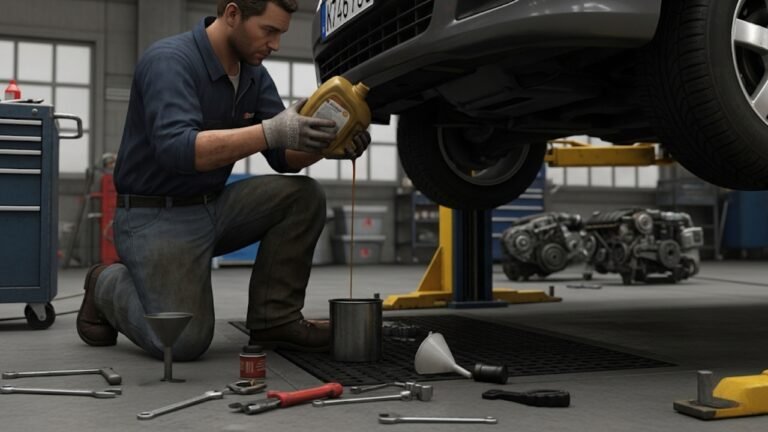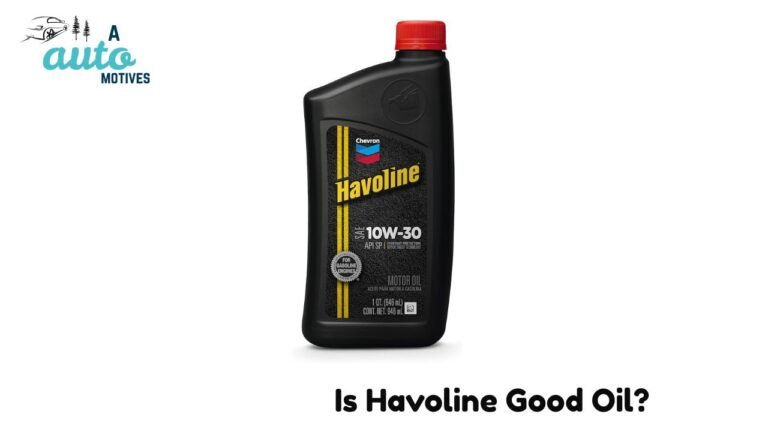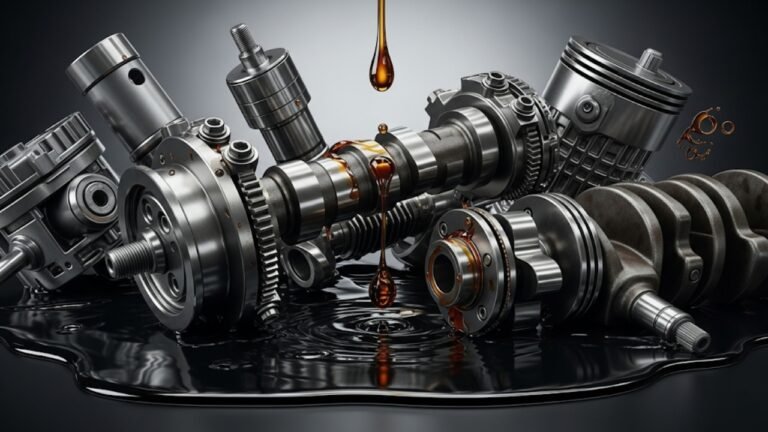What Really Happens When You Put Too Much Oil in Your Car
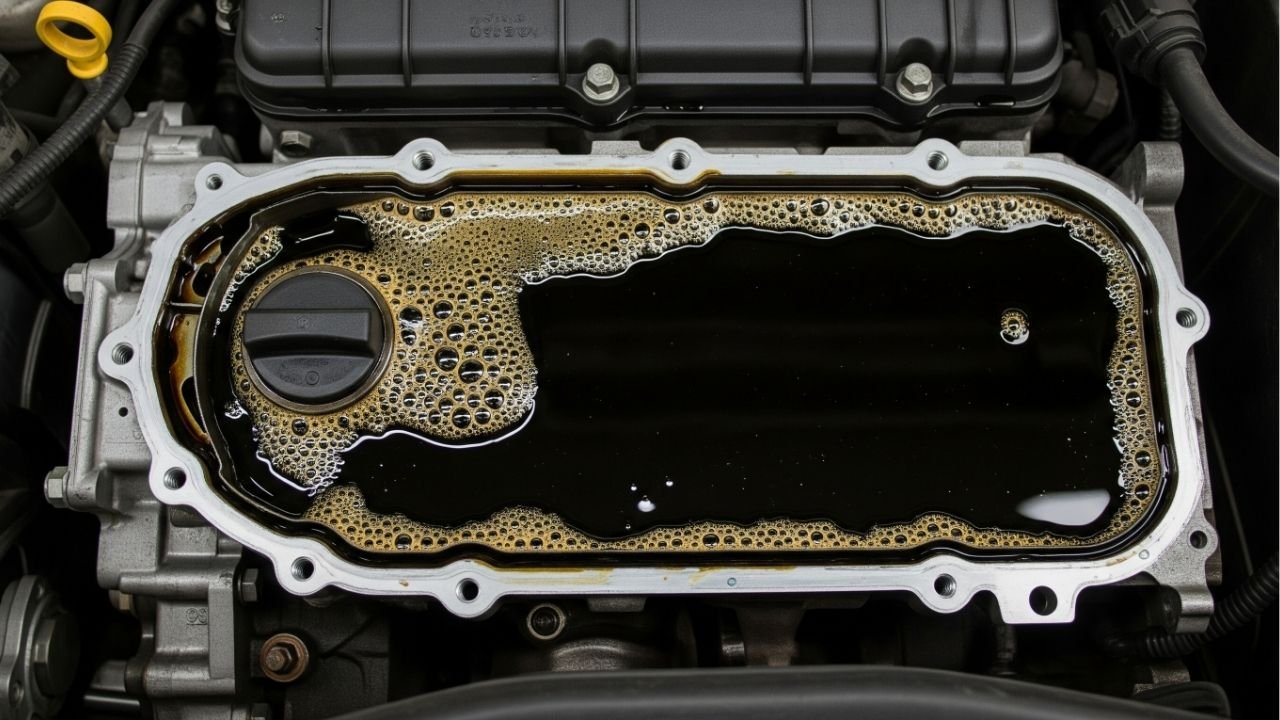
We’ve all had those moments. You try to be responsible—change the oil, check the dipstick, top things off—and somehow, you mess it up. That was me. The day I stood in my garage, scratching my head, thinking, “Main ki put too much oil in my car?” I didn’t mean to overfill it. I thought more oil meant more protection. But let me tell you, that innocent mistake turned into a messy situation—literally and financially.
This guide is not just a technical rundown. It’s a heartfelt, honest, and story-driven journey of what can go wrong, what signs to look for, and how to fix it. Whether you’re a car enthusiast or just someone trying to keep your ride healthy, you’ll get practical advice, emotional reassurance, and a few laughs.
In This Article
- 1 How I Ended Up Pouring Too Much Oil: A Story That Might Sound Familiar
- 2 What Happens Inside Your Engine When You Overfill It?
- 3 Symptoms That Screamed “You Messed Up”
- 4 The Technical Side (Explained Like You’re 12)
- 5 What I Did Immediately After the Realization
- 6 Why More Oil Doesn’t Mean More Protection
- 7 How Mechanics See This Mistake (And Why It’s Common)
- 8 Bullet Recap: What to Remember
- 9 Long-Term Effects of Overfilling Your Engine Oil
- 10 DIY vs. Mechanic: Should You Fix It Yourself?
- 11 How to Avoid Making the Same Mistake Again
- 12 Emotional Takeaways: Mistakes Are Just Lessons in Disguise
- 13 Real-World FAQs: Honest Answers for Everyday Drivers
- 14 Final Thoughts: Let This Be Your Story, Not Your Mistake
How I Ended Up Pouring Too Much Oil: A Story That Might Sound Familiar
It started like a normal weekend. I had bought a few bottles of synthetic oil, watched a few YouTube tutorials, and felt like I could take on the world—or at least, a basic oil change. But then, in my excitement (and slight overconfidence), I didn’t check how much oil my car actually needed. I just kept pouring.
The main keyword thought raced in my mind as I stared at the overfilled dipstick: “Main ki put too much oil in my car?” It was like putting too much salt in your favorite dish. The balance was gone. What was supposed to be a maintenance task now felt like I’d broken something.
And the consequences? They didn’t wait long to show up. My engine felt sluggish. The exhaust was puffing out more smoke than usual. Something was definitely off.
What Happens Inside Your Engine When You Overfill It?
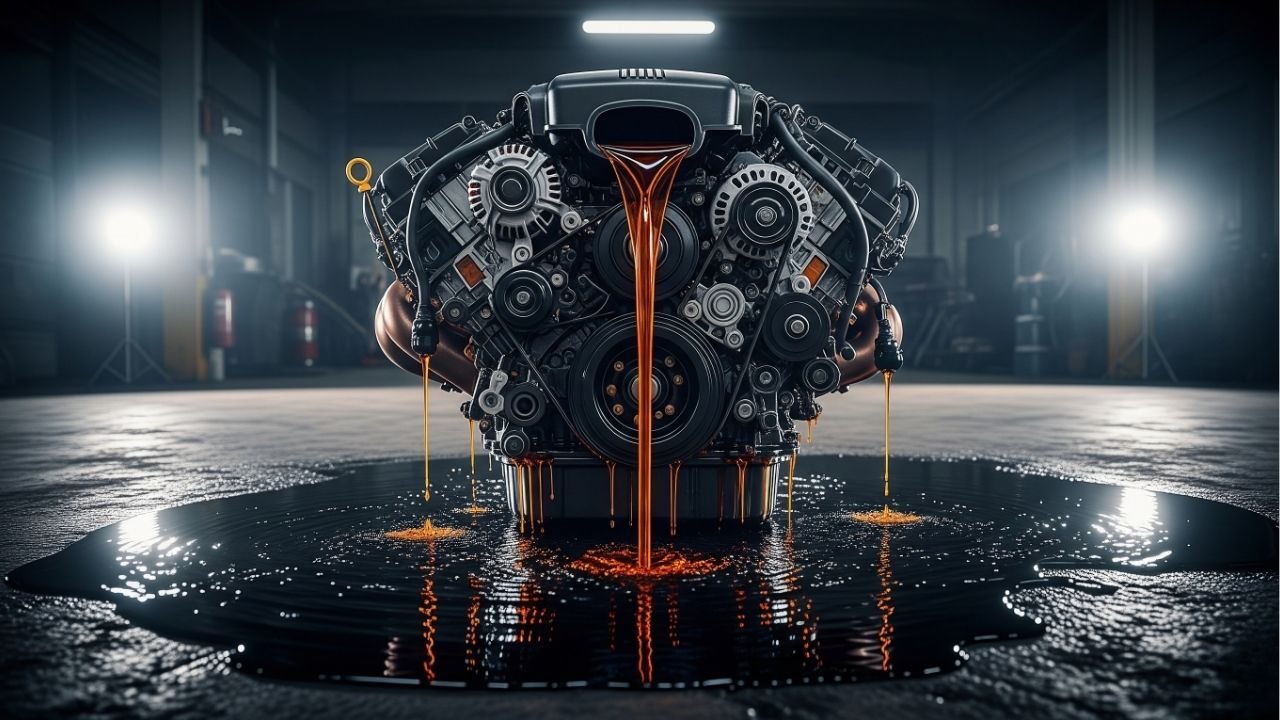
Let’s break it down simply:
| Correct Oil Level | Overfilled Oil Level |
|---|---|
| Lubricates parts smoothly | Foams and loses lubricating ability |
| Keeps pressure in balance | Causes high crankcase pressure |
| Maintains engine temperature | Leads to overheating risks |
When the oil level goes above the “MAX” line on the dipstick, it starts to behave differently. The crankshaft ends up churning the oil into foam, which means it can’t do its job properly. Foamy oil doesn’t lubricate. Instead, it traps air, overheats, and causes internal parts to wear out faster.
If you’ve ever felt like your car is running weird after an oil change, and your first instinct was, “Main ki put too much oil in my car?”, you might’ve been spot on.
Symptoms That Screamed “You Messed Up”
I noticed things weren’t right almost immediately after the oil change. It’s kind of like when you eat too much and your body screams at you with bloating, hiccups, and discomfort. Your car does the same, just in its own language.
Here are the signs I faced:
-
White or blue smoke from the exhaust
-
A burning oil smell in the cabin
-
Oil leaks under the car
-
The engine started to misfire or run rough
-
A strange knocking sound during acceleration
-
The check engine light blinked to life
At first, I wanted to ignore it. But deep down, I knew: “Main ki put too much oil in my car.” And pretending it didn’t happen wasn’t going to fix it.
The Technical Side (Explained Like You’re 12)
Cars are like people—they have limits. An engine needs oil, sure, but in moderation. Overfilling oil changes everything about how it moves through the engine. Think of it like flooding a room meant for ankle-deep water with a tsunami. Things don’t flow—they drown.
When oil floods the crankcase:
-
It increases pressure, which can cause seals and gaskets to fail.
-
The catalytic converter gets choked because of burning oil.
-
Engine components wear down because foamy oil can’t lubricate.
-
The spark plugs get dirty, affecting the combustion process.
That’s why your engine feels off. The internal harmony is broken. And yes, you guessed it—“Main ki put too much oil in my car” becomes more than a passing worry.
What I Did Immediately After the Realization
After Googling frantically and watching a dozen mechanic videos, I finally faced the truth: I had to drain the excess oil. But I didn’t want to go back to the garage and admit my mistake. So, I rolled up my sleeves and fixed it myself.
Here’s what helped me get back on track:
-
Parked the car on level ground
-
Let the engine cool down
-
Used a manual pump to remove oil from the dipstick tube
-
Checked the oil level again and again
-
Replaced the oil filter, just to be safe
-
Monitored the engine sound and exhaust for days after
That was a turning point. I didn’t just fix a mechanical problem. I grew. I took responsibility. I learned. And every time I check my oil now, I remember that panicked question: “Main ki put too much oil in my car?” with a smile and a sigh.
Why More Oil Doesn’t Mean More Protection
This part really hit me. I thought extra oil meant more lubrication. More love for the engine. More care. But that’s not how engines work. It’s like overwatering a plant—it doesn’t grow better, it drowns.
Too much oil:
-
Does not improve performance
-
Reduces fuel economy
-
Overloads seals, causing leaks
-
Puts strain on internal parts
Let’s look at it this way:
| Belief | Reality |
|---|---|
| More oil = better care | Too much = engine damage |
| Topping up is harmless | It can trigger oil-related faults |
| The dipstick isn’t important | It’s your first warning system |
That’s why every car manual comes with a specific oil capacity. Respect it. Treat it like a recipe. Would you double the salt in a cake just to be extra safe? Of course not.
How Mechanics See This Mistake (And Why It’s Common)
I spoke to a local mechanic after this happened. He chuckled and said, “Happens all the time, bro. People think they’re doing their car a favor.”
The thing is, many of us are taught to fear low oil, not high oil. So we pour more, thinking it’ll help. But the margin for error is small. Just half a quart too much can trigger problems in some engines.
And most people don’t realize the consequences until it’s too late. That’s why we need more honest, relatable conversations around topics like this. Not just robotic guides. But real talk. Like this.
Bullet Recap: What to Remember
If you’re in a hurry, here’s the quick version:
-
Too much oil = real danger
-
Foaming, pressure, leaks, and smoke are early symptoms
-
Always check the dipstick before topping off
-
Use a manual pump or drain bolt to remove excess
-
Never assume “more” means “better” in engine care
-
Watch for check engine light, weird smells, or rough starts
Long-Term Effects of Overfilling Your Engine Oil
At first, everything might seem okay. Your car runs. It doesn’t explode. But over time, that extra oil can quietly sabotage your engine’s health. This isn’t a “fix it and forget it” situation. Think of it like ignoring high blood pressure—it might not hurt today, but the damage adds up.
Here’s what overfilling can do in the long run:
-
Premature engine wear due to poor lubrication
-
Catalytic converter damage from burning excess oil
-
Valve and gasket failures, leading to costly repairs
-
Reduced fuel efficiency, making every ride less economical
-
Permanent oil leaks, even after the level is corrected
Even if you’ve drained the excess oil, the aftermath might linger. That’s why it’s so important to catch the mistake early and not ignore the signs when your car tells you something’s off.
DIY vs. Mechanic: Should You Fix It Yourself?
When I realized “Main ki put too much oil in my car,” my first thought was, “Can I fix this on my own?” The short answer: it depends.
Let’s weigh the options in a simple table:
| DIY Fix | Mechanic Help |
|---|---|
| Cheap and fast if caught early | Costs more, but checks everything |
| Needs tools like a pump or wrench | No tools needed from your side |
| Risk of missing deeper damage | Full diagnostic and peace of mind |
| Great for confident beginners | Best for those unsure or anxious |
If your car is running normally and you catch the overfill quickly, a DIY fix might be enough. But if you notice engine knocking, smoke, or a check engine light, it’s time to let a pro take a look.
How to Avoid Making the Same Mistake Again
This experience taught me to respect the small details. It’s easy to overlook the oil level, especially when you’re in a rush. But if you really want to avoid the panic of asking yourself “Main ki put too much oil in my car?” again, follow these simple tips:
Preventative Steps:
-
Read the owner’s manual – Know exactly how much oil your car needs
-
Check the dipstick before and after every top-up
-
Use a funnel to prevent spills and over-pouring
-
Pour slowly and in small amounts, checking in between
-
Keep a logbook of when and how much oil you add
These little habits will save you from big headaches.
Emotional Takeaways: Mistakes Are Just Lessons in Disguise
Honestly, I felt embarrassed at first. I kept replaying the scene in my head: pouring with confidence, feeling like a DIY pro—then being hit with reality. But the more I talked to people, the more I realized how common this mistake really is.
Whether you’re in Dhaka, Dallas, or Delhi, this kind of slip-up happens to anyone trying to take care of their vehicle without a professional. And that’s okay. The important thing is learning and growing from it.
So if you’re here after Googling “Main ki put too much oil in my car,” don’t beat yourself up. Take it as a moment of growth. You’re learning. You’re improving. And next time? You’ll do it better.
Real-World FAQs: Honest Answers for Everyday Drivers
1. How much is “too much” oil in a car?
Even half a quart over the recommended limit can be too much. Always check your manual and dipstick levels.
2. Can driving with too much oil damage the engine permanently?
Yes. If driven for too long, it can damage seals, gaskets, and the catalytic converter, possibly leading to engine failure.
3. How do I know if my car has too much oil?
Watch for white/blue smoke, weird smells, rough idle, or a check engine light. Also, inspect the dipstick.
4. What tools can help remove extra oil?
A fluid extractor pump is a cheap and easy way to remove excess oil through the dipstick tube.
5. Is it okay to drive short distances with too much oil?
If it’s slightly overfilled, a short drive may not hurt. But if it’s well above the “max” line, it’s risky. Drain the excess immediately.
6. Can I just let the car burn off the extra oil?
No! That could damage your spark plugs, sensors, and exhaust system. Burning oil isn’t a safe fix.
7. Should I change the oil filter too after overfilling?
Yes. The filter may get saturated or clogged from excess pressure. A clean filter ensures proper flow.
8. What’s the safest way to top off oil?
Always add small amounts, recheck the dipstick, and avoid rushing. Think “half cup at a time,” not “fill it to the brim.”
Final Thoughts: Let This Be Your Story, Not Your Mistake
We all have moments where we try to do the right thing but end up causing a little chaos. The day I realized, “Main ki put too much oil in my car,” was one of those moments. But you know what? It led me to understand my vehicle better, grow more confident with basic maintenance, and feel more connected to others who’ve made the same mistake.
Cars are like relationships. They need the right balance. Too little attention and they struggle. Too much? They overflow. The key is learning, listening, and finding that sweet spot in the middle.
So next time you pop your hood and reach for that oil bottle, take a breath. Check the manual. Respect the dipstick. And smile, knowing you’ve already learned the hard part.

